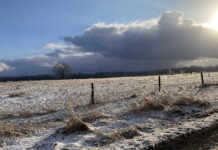Along the old stage coach routes and in the small villages where the coach would cease its travel for the night, remain remnants of the dwellings that housed the travelers.
Local hostelries. Along route 172 from Lisbon to Canton, in Georgetown, at Guilford, and a dozen other localities an observer can find these enduring remains of early travel.
In New England, Pennsylvania and others areas, there was an inn, a cook shop, and a tavern, This was decades before there were motels or hotels.
Room and board was never high priced and varied from area to area. New England innkeepers usually charged 6 pence for a meal; lodging and wine with the meal totaled 3 shillings per day.
Magistrates of towns screened applicants wishing to establish an inn in their town, therefore the number of inns was limited.
No revelry. When first established, only Sack (sherry) was permitted as no strong liquors were allowed. Beer was allowed at a penny a quart. No baked goods was permitted to be sold separately. Gaming, music and dancing were also forbidden.
Most of these establishments first served as taverns with lodging provided, however other uses occurred as time and “civilization” evolved. Many old taverns still remain in the northeastern states.
Names and places. One such old house was built in 1690 in Sudbury, Mass., and was originally named “Red Horse Tavern” but was later renamed the Wayside Inn of Longfellows stories.
The names acquired by these houses were usually displayed on a hanging board at its front – an illustration was usually combined with the name.
Before the Revolutionary War, names given to taverns were quite similar to many other factors of life, and these names usually copied familiar taverns in the Old World. After the war, landlords adopted more patriotic titles and symbols.
The sign-board had been in use since the feudal eras, many carved and sometimes accompanied with a picturesque element and symbolism. Illustrations were for identification of services therein.
Its history. Volumes could be recorded on the historic, emblematic, biblical, heraldic and descriptive signs utilized in our yesteryears to advise the non-reading public of services therein.
Baltimore and Philadelphia were renown in our early years for the numerous and qualities of their signboards.
Along the ocean shore from Virginia to Florida, inns were not very numerous so private homes permitted accommodation for room and meals.












